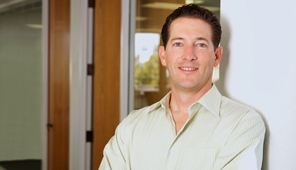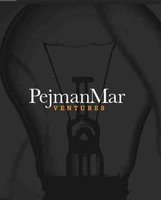 StrictlyVC recently visited General Catalyst Partners in Palo Alto, Ca., as readers who’ve caught our interviews with Niko Bonatsos and Neil Sequeira know. Today, we conclude our General Catalystorm™ with Steve Herrod, a managing director who joined the firm last year after spending a dozen years with VMWare, the software giant that specializes in virtualization.
StrictlyVC recently visited General Catalyst Partners in Palo Alto, Ca., as readers who’ve caught our interviews with Niko Bonatsos and Neil Sequeira know. Today, we conclude our General Catalystorm™ with Steve Herrod, a managing director who joined the firm last year after spending a dozen years with VMWare, the software giant that specializes in virtualization.
Herrod was VMWare’s chief technology officer for his last five years with the company; he also has a PhD in computer engineering from Stanford. Thankfully, he can also speak plainly when seated opposite an English major. Here’s a bit of our chat, edited for length:
You invest solely in companies that sell products to enterprises. What’s your primary focus right now?
Mobile-first infrastructure. Everyone talks about apps in the consumer world, but enterprises still don’t think about every one of their customers accessing their information through a mobile device. Knowing that all enterprises will move to mobile in a very aggressive way, [I think a lot about] what are the second and third order changes that have to happen.
What’s among the biggest of those changes?
How companies actually write applications. Every company has a Web application; it’s what you use when you ask for help or your HR report. But when creating new mobile applications, companies and vendors quickly realize that they have to do something different with all the data and systems behind it — that more formal APIs [or side doors for developers into their machinery] are essential. To create a formal way that a mobile app and a Web app can access customer data is a pretty big transition, so I’m focusing on tools that help people create and use these APIs for the first time.
What’s a portfolio company that illustrates your point?
Runscope is helping companies formalize how they create and test and make these APIs safe for the rest of the world.
I think all the core assets of companies are going to be things they can monetize or [otherwise make more accessible to external parties], so it’s a bet that formal APIs are the future for all companies.
Who are Runscope’s customers?
It just signed a great deal with Adobe as Adobe becomes a cloud company that provides a lot of access to things [on a subscription basis]. [The wearable device company] Fitbit uses Runscope. Target is another example [of a customer]. All are trying to formalize access to use of their data safely and securely. In the traditional world, you own an application and are responsible for it working. When you move to an API world, you have all these external people who are accessing your stuff, and if you do something that breaks it, you’ve now broken a bunch of other people’s stuff. So it’s almost more important that you use new tools on these APIs to prevent the external world from falling apart.
You were with VMWare for many years. Has it been easier or more difficult than you’d imagined to transition into VC?
My first few months [as a VC] was a tour to meet other VCs and ask [their advice], and everyone was very collaborative and helpful. [But] I definitely wanted to take a different angle to venture than I’d seen in my own work on the M&A side at VMWare. I come from a very technical background . . .I don’t think too many [other VCs] come from that background . . so [I] end up bringing hopefully something unique to the table . . . In the enterprise world, it’s amazing how many people make investments without actually trying out products.
Sign up for our morning missive, StrictlyVC, featuring all the venture-related news you need to start you day.












